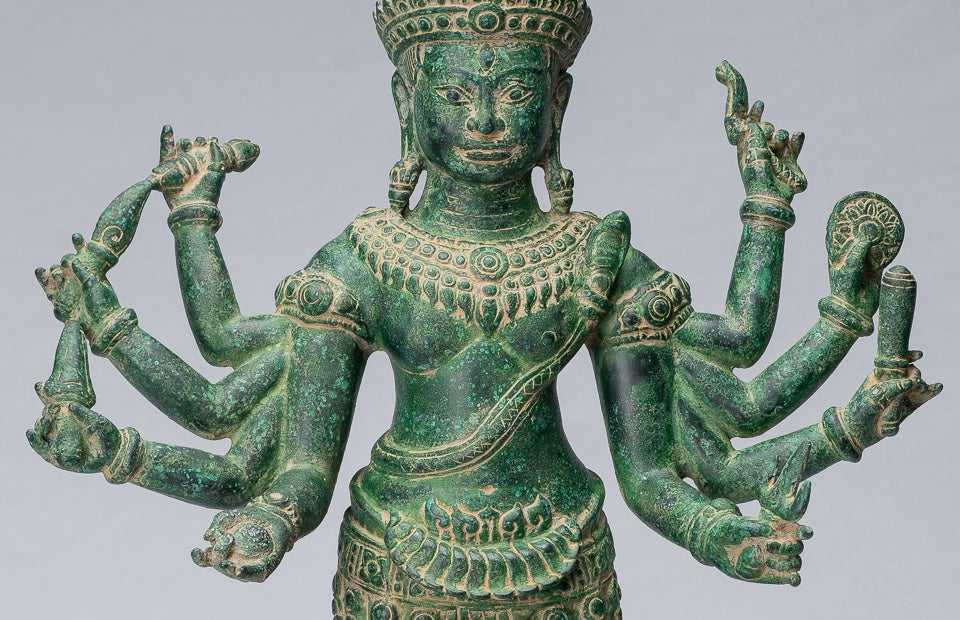
Unveiling the Divine Trinity: Exploring the Significance of the Hindu Trimurti
Introduction
At the heart of Hindu theology lies the concept of the Trimurti—an enigmatic trinity comprising Brahma, Vishnu, and Shiva. Together, these deities embody the cosmic functions of creation, preservation, and destruction, forming the cornerstone of Hindu cosmology and spirituality.
In this blog post, we embark on a journey to unravel the profound symbolism and spiritual significance of the Trimurti, delving into its rich mythology and philosophical implications.
The Concept of Trimurti
The term "Trimurti" is derived from the Sanskrit words "tri," meaning three, and "murti," meaning forms or embodiments. The Trimurti represents the three fundamental aspects of the divine—creation (Brahma), preservation (Vishnu), and destruction (Shiva). Together, these deities form an inseparable cosmic triad, symbolizing the cyclical nature of existence and the eternal flow of time.
- Brahma: The Creator: Brahma is the first member of the Trimurti, tasked with the divine function of creation (Srishti). In Hindu mythology, Brahma is depicted as the four-faced deity seated on a lotus emerging from the navel of Lord Vishnu. He is often portrayed holding a sacred book (Vedas) and a rosary (akshamala), symbolizing knowledge and creativity. While Brahma is revered as the creator of the universe, his worship is relatively rare compared to Vishnu and Shiva.
- Vishnu: The Preserver: Vishnu occupies the central position in the Trimurti, representing the principle of preservation (Sthiti). He is depicted as the benevolent deity with blue skin, holding a conch shell (shankha), discus (chakra), mace (gada), and lotus flower (padma) in his four arms. Vishnu is revered for his divine incarnations (avatars), such as Rama, Krishna, and Buddha, who descend to Earth to restore cosmic order and protect dharma (righteousness).
- Shiva: The Destroyer and Transformer: Shiva, the third member of the Trimurti, embodies the principle of destruction (Samhara) and transformation. He is depicted as the ascetic deity adorned with a crescent moon on his matted locks, holding a trident (trishula) and a drum (damaru). Shiva's role as the destroyer is not merely about annihilation but also about clearing the path for renewal and regeneration. He is also associated with meditation, asceticism, and the dissolution of the ego.
The term "Trimurti" is derived from the Sanskrit words "tri," meaning three, and "murti," meaning forms or embodiments. The Trimurti represents the three fundamental aspects of the divine—creation (Brahma), preservation (Vishnu), and destruction (Shiva). Together, these deities form an inseparable cosmic triad, symbolizing the cyclical nature of existence and the eternal flow of time.
Symbolism and Unity
The Trimurti symbolizes the unity and interconnectedness of the cosmic forces—creation, preservation, and destruction. Each deity complements the others, forming an inseparable whole that sustains the universe. The cycle of creation, preservation, and destruction is not linear but cyclical, reflecting the eternal flow of time and the continuous evolution of existence.
Philosophical Implications
The Trimurti concept holds profound philosophical significance within Hinduism. It embodies the idea of Brahman—the ultimate reality or cosmic consciousness—manifesting itself in diverse forms and functions. The Trimurti illustrates the unity of opposites—creation and destruction, order and chaos, existence and non-existence—highlighting the inherent duality and interconnectedness of all things.
Conclusion
The Trimurti stands as a potent symbol of cosmic order, balance, and harmony within Hindu theology. As the embodiment of creation, preservation, and destruction, Brahma, Vishnu, and Shiva offer profound insights into the nature of existence and the divine play of consciousness.
By contemplating the significance of the Trimurti, devotees gain a deeper understanding of the fundamental principles that govern the universe and their own spiritual journey.


